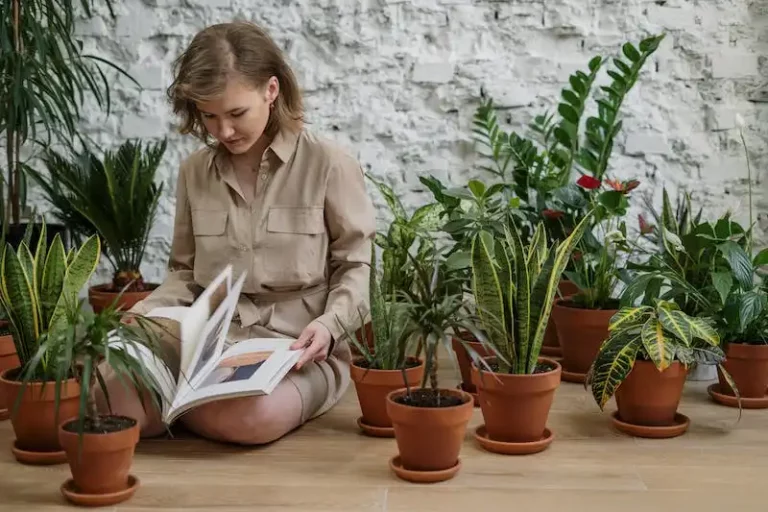For coffee lovers, there is nothing quite like the satisfaction of brewing a fresh cup of joe using beans you’ve grown with your own two hands. Coffee plants, known for their rich flavors and unique characteristics, require special care and attention to thrive. If you’ve ever thought about growing your own coffee plants, this guide will provide you with all the information you need.
First and foremost, it’s important to know where coffee beans come from. Coffee plants, native to tropical regions, grow best in areas with high elevation and ample rainfall. The coffee beans, which are actually seeds found inside the cherries that grow on the plants, have the potential to yield a bountiful harvest if the conditions are right. However, coffee plants are susceptible to various diseases and pests, so proper care and maintenance are necessary.
When it comes to propagating coffee plants, there are a few important steps to follow. Start by obtaining ripe coffee cherries, which can be sorted from the green ones. The cherries must be washed thoroughly to remove any residual pulp. After washing, the cherries can be dried to the desired moisture level before being planted. It’s also worth noting that coffee plants can take up to four years to bear fruit, so patience is key.
Watering is another crucial aspect of coffee plant care. Coffee plants prefer frequent, light watering rather than heavy, infrequent watering. The soil should be moist but not waterlogged, as excessive moisture can lead to root rot and other diseases. Additionally, coffee plants thrive in well-draining, porous soil. If you’re growing coffee plants indoors, make sure to place them near a window where they can receive adequate sunlight.
Like any plant, coffee plants are also vulnerable to pests. Common pests that affect coffee plants include aphids, mealybugs, and leafminers. Regular inspection and prompt action can help prevent these pests from causing damage to your coffee plants. Additionally, coffee plants should be fertilized regularly with a balanced, organic fertilizer to ensure optimal growth and health.
In terms of harvesting coffee beans, it’s important to know when the cherries are ripe. Ripe coffee cherries are usually bright red and slightly soft to the touch. Once the cherries are harvested, they must be processed to remove the outer layers and extract the green coffee beans inside. This can be done using a variety of methods, including the washed process, natural process, and honey process.
All in all, growing coffee plants requires dedication, attention to detail, and a lot of patience. However, the rewards are more than worth it for coffee enthusiasts. By following the basics of coffee plant care, you can eventually enjoy the satisfaction of brewing your own cup of joe using beans you’ve grown yourself. So go ahead, grab yourself a coffee mill and get started on your coffee-growing journey!
How to Grow Coffee
If you’re a coffee lover like many of us, you may have wondered about growing your own coffee plants. In this guide, we’ll cover the basics of growing coffee plants, from selecting the right varietal to caring for the plant until it bears ripe cherries.
Selection and Varietal
When starting your coffee plant, you must first choose the right varietal. There are two main types of coffee plants: robustas and arabicas. Robustas are easier to grow and have a higher yield, but they typically produce a more bitter cup of coffee. Arabicas, on the other hand, are considered to be of higher quality due to their delicate flavor profiles.
If you want to grow arabicas, keep in mind that they are more sensitive to temperature fluctuations and require a more careful approach. Robustas are generally more tolerant to different conditions and can be grown in a wider temperature range.
Planting and Care
Once you’ve selected the right varietal, it’s time to plant your coffee plant. Coffee plants can be grown indoors or outdoors, depending on your climate. They need a place with plenty of light, so placing them near a window is a good idea. Additionally, coffee plants prefer high humidity levels, so misting the leaves regularly can help maintain the right conditions for growth.
Coffee plants thrive in well-draining soil, so make sure to use a pot with drainage holes if growing them in containers. Regular watering is necessary to keep the plant healthy, but be careful not to overwater as this can lead to root rot.
Harvesting and Processing
Coffee plants typically start flowering in their third or fourth year. The flowers will turn into green cherries which will ripen over several months. When the cherries are fully ripe, they can be harvested by carefully handpicking or using specialized machines on larger farms.
After harvesting, the cherries must be processed to remove the cherry pulp and dry the beans inside. This can be done through various methods, such as the washed process or the natural process. Each method will produce beans with different flavor profiles.
FAQs
- Q: How long does it take for a coffee plant to bear fruit? A: Coffee plants typically start bearing fruit in their third or fourth year.
- Q: Do coffee plants only bear fruit once a year? A: No, coffee plants can bear fruit multiple times a year depending on the climate and growing conditions.
- Q: Do coffee plants require a specific temperature to grow? A: Yes, coffee plants prefer temperatures between 60°F and 70°F (15°C and 24°C) for optimal growth.
- Q: How do I know if my coffee plant is healthy? A: A healthy coffee plant will have vibrant leaves and show signs of new growth.
- Q: Why do coffee plants need high humidity? A: High humidity replicates the natural conditions where coffee plants are grown, helping them thrive.
By following these guidelines, you can perk up your green thumb and enjoy the process of growing your own coffee plants. Not only will it provide you with fresh beans, but it will also deepen your appreciation for the effort and care involved in producing that perfect cup of joe.
Which coffee plant is the best
If you’re a coffee lover, growing your own coffee plant can be a gratifying experience. But with so many different varieties to choose from, which coffee plant is the best for you?
The two most popular coffee plants are Arabica and Robusta. Arabica is known for its delicate flavor and balanced acidity, making it a favorite among coffee connoisseurs. It is also less bitter than Robusta. On the other hand, Robusta coffee is known for its strong and robust flavor, making it the preferred choice for espresso and instant coffee.
If you want to grow your coffee plant indoors, Arabica is the best choice as it can thrive in temperate conditions and is more adaptable to different environments. Robusta, on the other hand, requires a warmer climate and is better suited for outdoor cultivation.
When choosing your coffee plant, it’s important to consider the growing conditions that work best for each variety. Arabica prefers higher altitudes, while Robusta can tolerate lower altitudes. Arabica grows at a slower pace and requires more care and attention, while Robusta is more resilient and easier to maintain.
Another important factor to consider is the amount of moisture your coffee plant needs. Both varieties require consistent watering, but Arabica thrives in a moister environment, while Robusta can tolerate drier conditions.
In terms of revenue, Arabica coffee typically sells for a higher price per pound, making it the more profitable choice for commercial growers. However, if you’re growing coffee for personal consumption and don’t care about selling the beans, you can choose whichever variety you prefer.
So, to summarize:
- If you want a delicate flavor and balanced acidity, choose Arabica.
- If you prefer a strong and robust flavor, choose Robusta.
- If you’re growing indoors, go for Arabica; if you have a suitable outdoor climate, choose Robusta.
- If you have more time and patience to care for your coffee plant, Arabica is the way to go.
- If you want a more resilient plant that requires less attention, choose Robusta.
- If you want a more profitable option for commercial growing, Arabica is recommended.
Remember, growing your own coffee plants is not only about the end result of a steaming cup of joe. It’s also about the process, the leisurely care and attention you provide to the plant, and the joy of seeing the cherries ripen and turn from green to a rich brown. So, no matter which coffee plant you choose, make sure to enjoy the whole experience!
Robusta v Arabica
When it comes to coffee plants, there are two main varieties that dominate the world’s coffee production: Robusta and Arabica. These two varietals have distinct characteristics and are grown in different climates, resulting in varying flavors and qualities of coffee.
Robusta: Robusta coffee plants (Coffea canephora) are hardier and more resistant to diseases compared to Arabica plants. They can be grown in lower altitudes and are often found in regions with temperatures ranging from 24 to 30 degrees Celsius (75 to 86 degrees Fahrenheit). Robusta coffee cherries have a higher yield and contain more caffeine than Arabica cherries, resulting in a stronger and more bitter cup of joe.
Arabica: Arabica coffee plants (Coffea arabica) are known for their high quality and delicate flavors. They require a temperate climate and are typically grown at higher altitudes, between 600 to 2000 meters (2000 to 6500 feet) above sea level. Arabica plants have lower yields and are more susceptible to diseases and pests compared to Robusta plants, but their cherries produce a milder and more flavorful cup of coffee.
If you’re thinking about growing coffee plants at home, it’s important to consider which varietal suits your environment and preferences best. Robusta plants are relatively easier to take care of due to their resilience, while Arabica plants require more attention and specific conditions to thrive.
To grow coffee plants indoors, you’ll need a well-drained potting mix and a location with bright, indirect light. It’s also important to maintain high humidity levels by misting the foliage or placing a tray of water nearby. Keep in mind that coffee plants can grow quite tall, so regular pruning and checking for pests is essential.
When propagating coffee plants, it’s best to grow them from fresh seeds harvested from ripe coffee cherries. The seeds should be carefully cleaned, dried, and planted in a suitable potting mix. Germination can take anywhere from a few weeks to a few months, so patience is key. Once the seedlings have grown strong enough, they can be transplanted into larger pots or directly into your garden.
Whether you choose to grow Robusta or Arabica coffee plants, the process can be rewarding if done well. You’ll soon be sipping your own homegrown coffee, knowing the journey it took from plant to cup. So grab your gardening tools and get started on a coffee adventure of your own!



